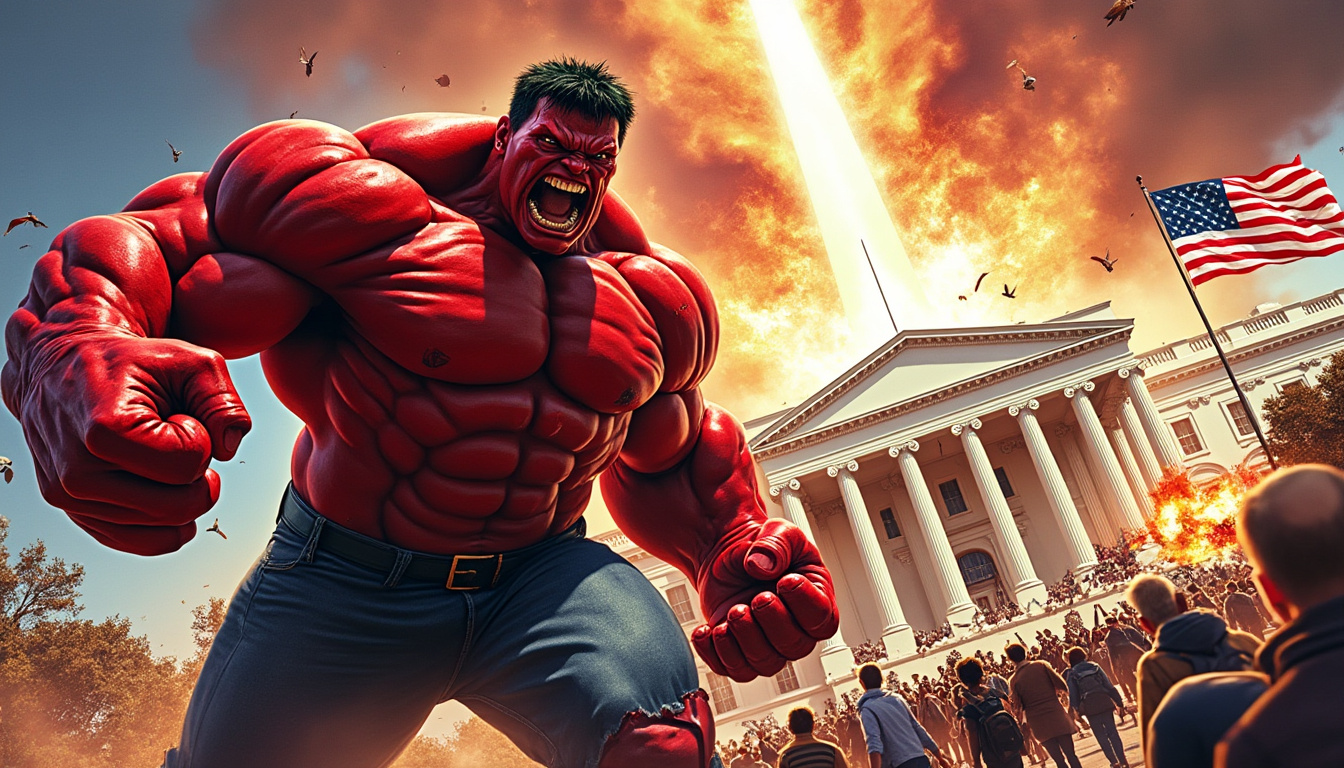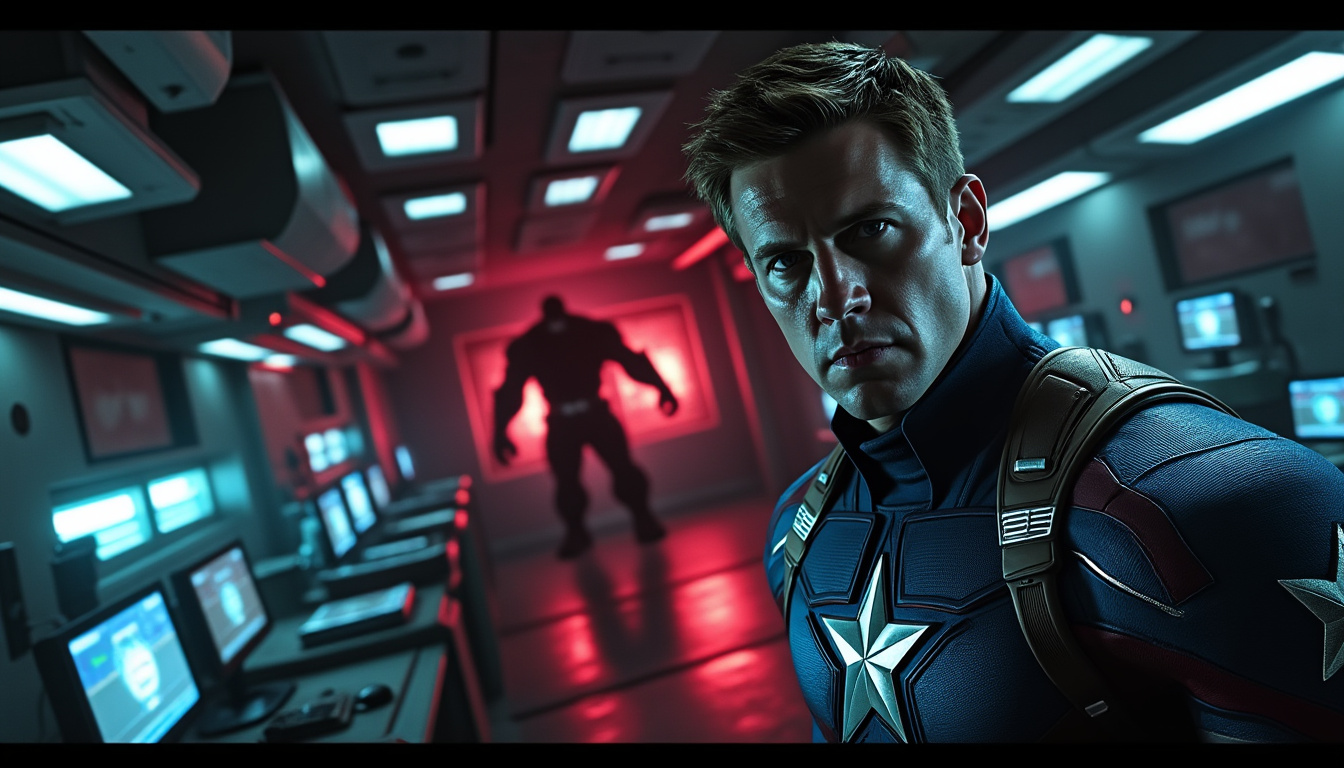The Marvel Cinematic Universe (MCU) continues to expand, captivating audiences with each new installment, and Captain America 4: Brave New World is no exception. As one of the most anticipated releases, fans are eager to uncover the backstory of President Thaddeus ‘Thunderbolt’ Ross and his transformation into the Red Hulk. While comic enthusiasts may be familiar with some aspects of this character’s evolution, the film promises to delve deeper into his origins and the mysterious role of his counterpart, the Leader. This exploration will not only highlight Ross’s evolution but also shed light on the Leader’s significant, yet elusive, role within the broader MCU narrative.
The transformation of Thunderbolt Ross into Red Hulk is a compelling narrative, intricately woven into the fabric of the MCU’s storytelling. The film seeks to answer pressing questions about his character, alongside his relationship with Samuel Sterns, known as the Leader. Comic book lore has often hinted at the Leader’s sinister intellect and ambitions, and the cinematic adaptation seeks to bring these themes to life. By examining the events that lead to Ross’s drastic transformation and the implication of Sterns’s machinations, we can appreciate the complex characters that Marvel has to offer.
Unraveling the Origin of Red Hulk in Captain America 4
Thunderbolt Ross, portrayed by the iconic Harrison Ford, has long been a character surrounded by mystery and power. In Captain America 4, his journey takes a dark turn as he faces the prospect of mortality and the pressures of leadership. Striving to gain an advantage, he turns to Samuel Sterns, AKA the Leader, who becomes a focal point in Ross’s transformation into the Red Hulk. The question arises: how does Ross go from a pivotal political figure to embodying a force of chaos?
The narrative unfolds as Ross, realizing he has been living on borrowed time, seeks the assistance of Sterns to prolong his life and secure his position as the President. This partnership, however, is built on deception and ulterior motives. Sterns provides Ross with a series of mysterious tablets intended to enhance his vitality, but at a significant cost. The deeper truth is that these tablets expose Ross to dangerous levels of gamma radiation, setting the stage for his eventual transformation into the Red Hulk.
The Dark Deal with Samuel Sterns
To further understand the unfolding events, it’s vital to dissect the dynamics between Ross and Sterns. The initially collaborative relationship starts to fray as Ross reneges on his promise to free Sterns from prison. From his incarceration, Sterns has been manipulating events, using his superior intellect to orchestrate outcomes in ways not immediately visible to Ross. This partnership is not merely one of equals, but rather underscores a master-student dynamic, with Sterns emerging as the puppet master of Ross’s fate.
Under Sterns’s guidance, Ross ingests the life-prolonging tablets, unaware that he is simultaneously becoming a vessel for gamma radiation. This dual action not only prolongs Ross’s life but also initiates a transformation that unleashes latent rage within him. The once-respected leader begins to morph into a red-skinned behemoth embodying unchecked fury. The sight of Ross, a figure associated with control and order, unleashing his inner chaos represents a significant thematic pivot for the character.
Emerging as Red Hulk
As Ross loses control over his transformation and chaos reigns, he becomes a threat to both his political aspirations and the safety of those around him. The turning point comes during a public Q&A session at the White House, where Ross succumbs to the overwhelming surge of red energy within him. This violent metamorphosis marks a crucial moment, not only for Ross but for the entire MCU, setting the stage for further conflicts and character developments.
Where is the Leader in the MCU?
While Red Hulk’s dramatic transformation serves as a central plot point, the fate of Samuel Sterns, the Leader, looms large over the narrative. Having last appeared in The Incredible Hulk, fans are deeply interested in understanding Sterns’s motivations and whereabouts. His absence raises questions about what role he plays in the unfolding drama of Captain America 4 and how his intellect might influence the events surrounding Ross.
After his introduction in The Incredible Hulk, Samuel Sterns was left in captivity, a casualty of the wider narrative that intertwined many characters in the MCU. Following the events of the movie, Sterns’s character likely continued to develop his intellect while plotting revenge against those who wronged him. The absence suggests a strategic pause in his story, waiting for the right moment to re-enter the fray, thus amplifying anticipation among fans.
The Power of Intellect
Sterns, while incarcerated, remains a pivotal figure with latent power and intelligence. His prolonged exposure to gamma radiation only enhances his cognitive abilities, equipping him with the foresight to predict outcomes and manipulate situations. As Ross undergoes his transformation, one can only wonder how much of this unfolding chaos was orchestrated by Sterns from behind the bars.
Ross’s imprisonment of Sterns comes with dire consequences. Sterns’s own evolution as the Leader is a parallel transformation to Ross’s metamorphosis. The narrative implies that while Ross is absorbing the chaotic energy of becoming Red Hulk, Sterns is developing a plan of his own, using his outcome prediction to sway political landscapes in his favor. It is this duality of character evolution that adds layers of complexity to the overarching tale.

Strategic Anticipation
With Captain America 4, the MCU is weaving a rich tapestry of narratives that embrace both action and complex character development. As Ross’s actions come to fruition, they culminate in a public spectacle that not only reveals his transformation into a figure of terror but also indirectly sheds light on the insidious role of the Leader.
What emerges from this duplicity is an engaging narrative that considers the implications of leadership in the face of chaos. Ross’s journey highlights the fragility of power, as actions taken to safeguard his legacy lead to its destruction. On the other hand, Sterns’s clever machinations provide insight into how intellect can manipulate even the strongest of characters.
Leader’s Manipulations
As the story unfolds, viewers are left pondering how fantasies of power and control seduce figures like Ross. His initial quest for dominance morphs into a chaotic journey, engendered by the very entities he sought to control. Sterns’s manipulations emerge as a critical plot device, illustrating that revenge is a dish best-served cold. Ross’s desperation becomes Sterns’s triumph as the Leader orchestrates events to enable his own legacy.
The Fate of Ross and Sterns
As both characters navigate their transformations, their inherent motivations remain tied to the overarching narrative arc of the MCU. Will Ross manage to reclaim his humanity amidst his monstrosity? Can Sterns leverage his newfound intellect for his own gain, or will he be thwarted? The tension is palpable, inviting viewers to delve deeper into the implications of power dynamics in the superhero genre.
Conclusion on Red Hulk’s Complex Narrative
As we await the release of Captain America 4: Brave New World, the intricate storylines of Red Hulk and the Leader not only showcase the evolution of characters but also highlight the twisted fates that intertwine them. The dynamic between President Thaddeus Ross and Samuel Sterns is a narrative that promises both action and psychological depth, echoing the complexities inherent in power struggles.
Exploring their journeys underscores the broader themes of ambition, vengeance, and the ever-thinning line between hero and villain within the MCU. As the story unfolds on screen, fans will be left to speculate and theorize the layered plots, eagerly discussing the implications of their transformations and the fate that awaits them.
The Intellectual Rivalry
In the MCU, the rivalry between Ross and Sterns transcends their physical transformations; it encapsulates the clash of brute force against cerebral mastery. While Ross embodies the tortured soul caught in his quest for power, Sterns represents calculated ambition and strategic planning. With intellectual prowess as his weapon, the Leader crafts an image of manipulation and foresight that stands in stark contrast to Ross’s emotive journey.
This rivalry fuels the narrative tension in Captain America 4, showcasing how varying aspects of strength manifest in the superhero genre. The actions and decisions of each character reverberate through the narrative landscape of the MCU, exploring how power can both build and destroy.


